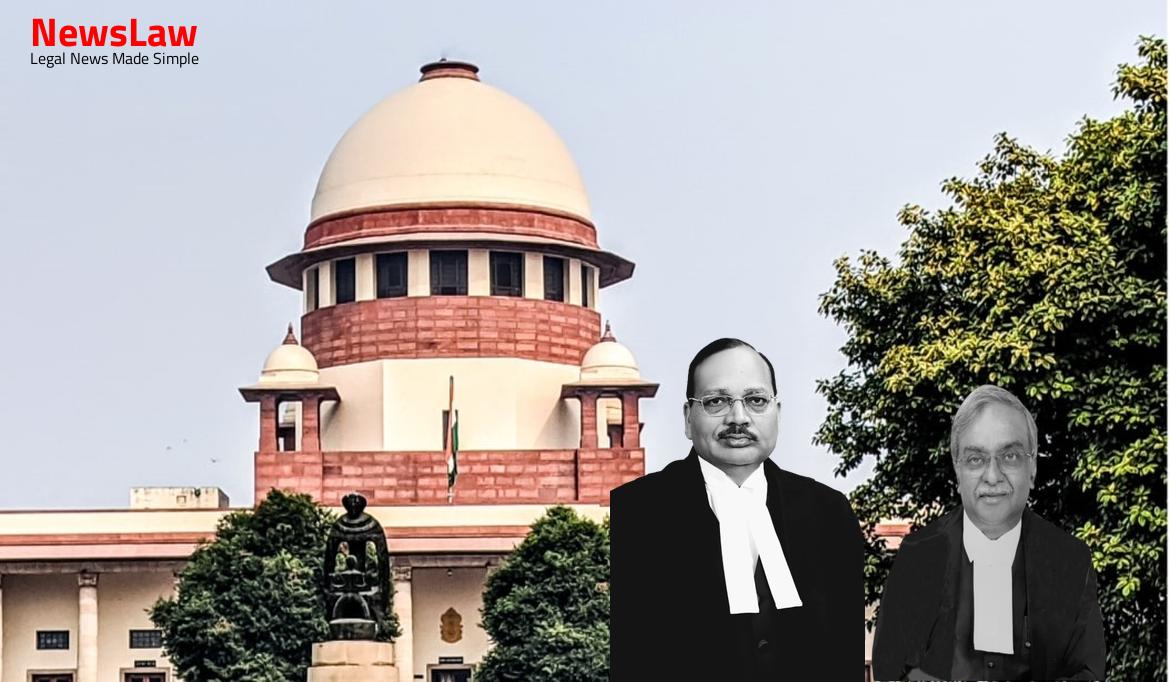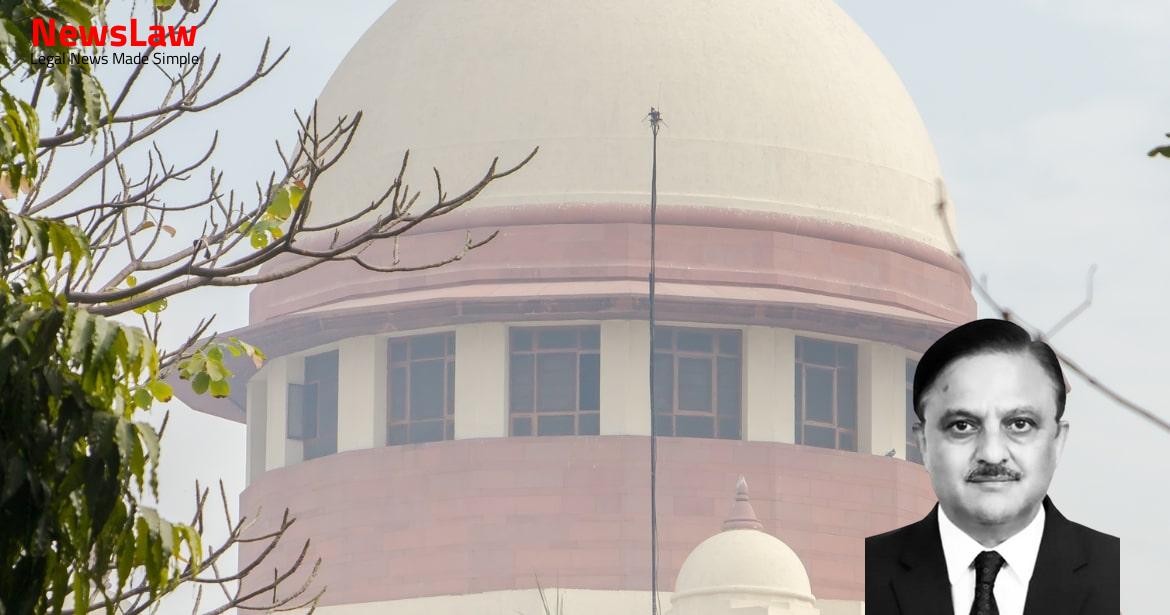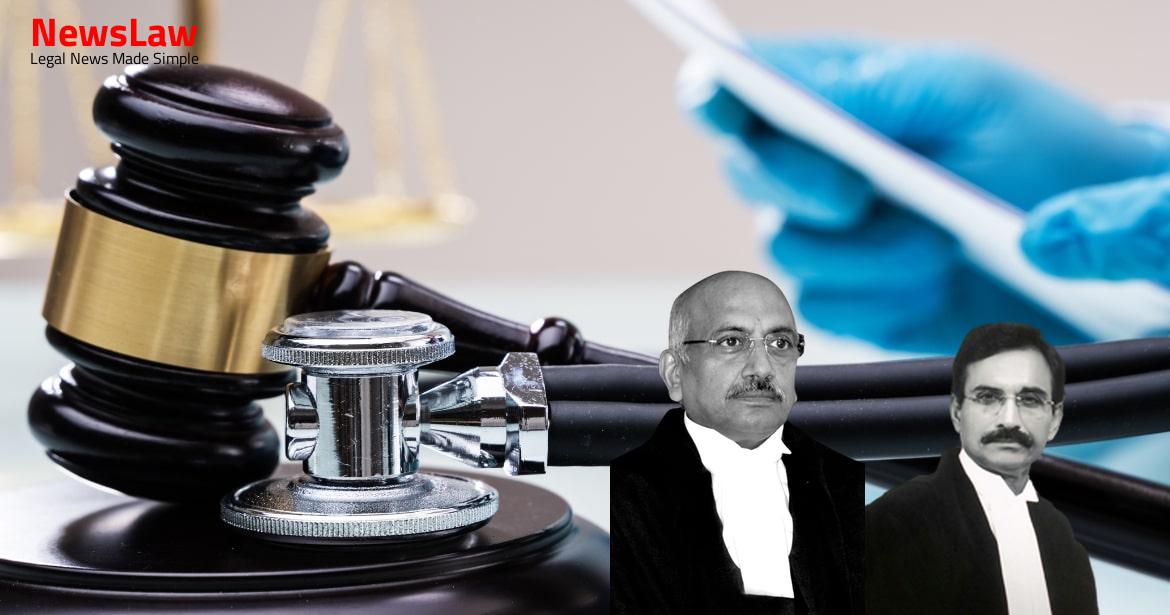Delve into the intricacies of the High Court’s scrutiny of Inter-Commissionerate Transfers under Recruitment Rules 2016 in this legal analysis. The court’s thorough examination of Rule 5, constitutional values, and the implications for cadre identity sheds light on important considerations in administrative policies. Stay informed on the nuances of this case as we explore the legal intricacies of transfer policies and their alignment with statutory regulations and constitutional principles.
Facts
- The High Court held that ICTs (Inter-Commissionerate Transfers) would violate the unique identity of each cadre as per the Recruitment Rules 2016.
- The Circular withdrawing ICTs was deemed not invalid by the High Court as it aligns with Rule 5 of RR 2016.
- The Circular allowed for exceptions in cases of extreme compassionate grounds on a ‘case to case on loan basis’.
- CBIC issued a circular stating that RR 2016 does not provide for recruitment by absorption and prohibits ICTs, except in exceptional circumstances.
- The Circular also mentioned the maximum period for transfers on ‘loan basis’ and the withdrawal of all ICTs issued post 26 December 2016.
- The circulars and office memoranda issued by the Department of Personnel and Training (DoPT) and the Department of Revenue relating to inter-commissionerate transfers (ICTs) have not been followed diligently by Ministries and Departments.
- Different OMs and circulars have been issued over the years, emphasizing on the posting of husband and wife at the same station, while considering the administrative constraints.
- The rules regarding recruitment by absorption and ICTs have evolved over time, with changes in the RR Rules 2016 and subsequent circulars by the Central Board of Indirect Taxes & Customs (CBIC).
- Specific instructions were issued by DoPT in 1986, 2003, and 2009 on the posting of spouses together and the discontinuance of ICTs.
- The Department of Revenue also issued circulars in 2004 and 2010 regarding the powers of Chief Commissioners in exercising administrative functions.
- Overall, the circulars and OMs aim to ensure that spouses working in the Central Government are posted together, subject to certain conditions and administrative feasibility.
Also Read: Electoral Malpractices in Mayor Election
Arguments
- The argument presented by the petitioners revolves around the non-inclusion of Rule 4(ii) in the Recruitment Rules of 2016 (RR 2016).
- They argue that the power to effect Inter Cadre Transfers (ICTs) was originally with the Commissionerate but has now been shifted to the Board due to the absence of a corresponding provision in RR 2016.
- The petitioners claim that ICTs have always been governed by executive instructions instead of specific rules within the Recruitment Rules.
- They highlight that the DoPT and Department of Revenue issued circulars and OMs regarding ICTs following constitutional objectives like maintaining equality and empowering women.
- An important point raised is that conflicts between different departmental policies should give primacy to the DoPT on matters of recruitment and service conditions.
- The petitioners also argue against the circular dated 20 September 2018, which banned ICTs, citing violations of Articles 14 and 16(1) of the Constitution by creating discrimination between employees and services.
- Furthermore, they mention that the provision for ICTs was being misused by employees for personal gains, which led to the necessity of banning such transfers.
- It is emphasized that without an enabling provision like Rule 4(ii), allowing ICTs would undermine the concept of cadre and cadre strength.
- Overall, the petitioners stress that the non-inclusion of Rule 4(ii) in RR 2016 does not bar ICTs as they have always been governed by administrative instructions.
- Transfer in All India Service is an incident of service, not a right.
- Exigencies of service govern where an employee should be posted.
- No fundamental or vested right for an employee to claim a transfer or posting of their choice.
- Executive instructions and administrative directions do not guarantee a transfer or posting as a right.
- Policies on posting spouses at the same station are subject to administrative needs.
- Norms for recruitment and conditions of service can be stipulated in laws, rules under Article 309, and executive instructions under Articles 73 and 162.
Also Read: Balancing Power and Transparency: Electoral Bonds Struck Down, Disclosure Mandated
Analysis
- RR 2002 contained a specific provision for Inter Commissionerate Transfers (ICTs), but RR 2016 lacks a similar provision
- Department of Revenue did not include the provision from RR 2002 when framing RR 2016
- Any ICT would violate the unique identity of each cadre as per Rule 5 of RR 2016
- The circular dated 20 September 2018 clearly states that RR 2016 do not allow recruitment by absorption or ICTs
- Transfer policies are within the employer’s jurisdiction and can include or exclude ICTs
- The power of judicial review cannot override policy decisions regarding conditions of service
- The Rules under Article 309 prevail over executive instructions
- DoPT instructions and Department of Revenue’s orders cannot supersede RR 2016 regulations
- RR 2016 Rule 5 specifies separate cadre for each Cadre Controlling Authority (CCA)
- CBEC holds the authority to direct the constitution of a joint cadre for multiple Commissionerates
- The circular permits transfers for a stipulated period on a loan basis to avoid absorption into a different cadre.
- The possibility of enhancing this provision to include cases like postings of spouses, disabled persons, and compassionate transfers is suggested to be considered at the policy level by the Board.
- Judicial decisions like Vikash Kumar v. Union Public Service Commission, Avni Prakash v. National Testing Agency, and Ravinder Kumar Dhariwal v. Union of India highlight the importance of substantive equality and nondiscrimination based on indirect forms.
- The Court emphasizes the need for policies to consider the mandate of the disabled to live with dignity and ensure family life as an incident of Article 21.
- The State is advised to craft policies keeping constitutional values in mind, such as protecting family life and privacy.
- Transfers should be determined on a case-by-case basis considering administrative requirements, with a provision for extensions.
- The State should balance the needs of maintaining family life with administrative requirements in policy-making.
- The circular provides exceptions for extreme compassionate grounds and allows transfers on a loan basis for specific durations subject to administrative requirements.
- The State’s policy formulation must respect the dignity and privacy of individuals while achieving its legitimate aims and balancing it with individual rights.
- The Department of Revenue previously discontinued inter-cadre transfers for certain groups of employees, allowing exceptions only for specific circumstances like extreme compassionate grounds.
- Modification of policy must maintain proportional relationship between policy objects and means used to implement it
- Policy must pass test of legitimacy, suitability, necessity, and balancing constitutional values
- Judgment of Division Bench of Kerala High Court upheld
- Respondents allowed to revisit policy to accommodate posting of spouses, needs of disabled, and compassionate grounds
Also Read: Recall of Resolution Plan Approval: Legal Analysis
Decision
- Pending applications disposed of
- Appeals to be disposed of as per terms mentioned
- Execution of exercise to be left to the executive
- Protection of constitutional values under Articles 14, 15, 16, and 21 emphasized
Case Title: SK NAUSAD RAHAMAN Vs. UNION OF INDIA (2022 INSC 287)
Case Number: C.A. No.-001243-001243 / 2022



